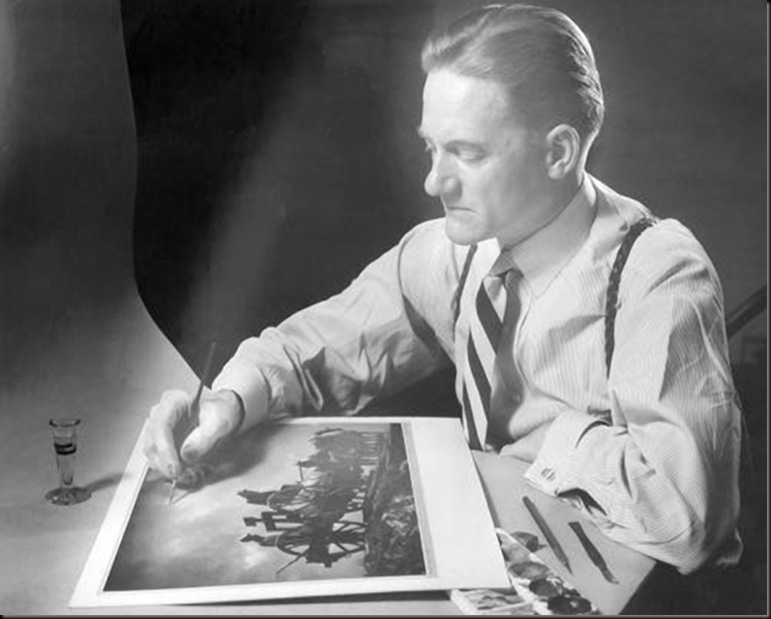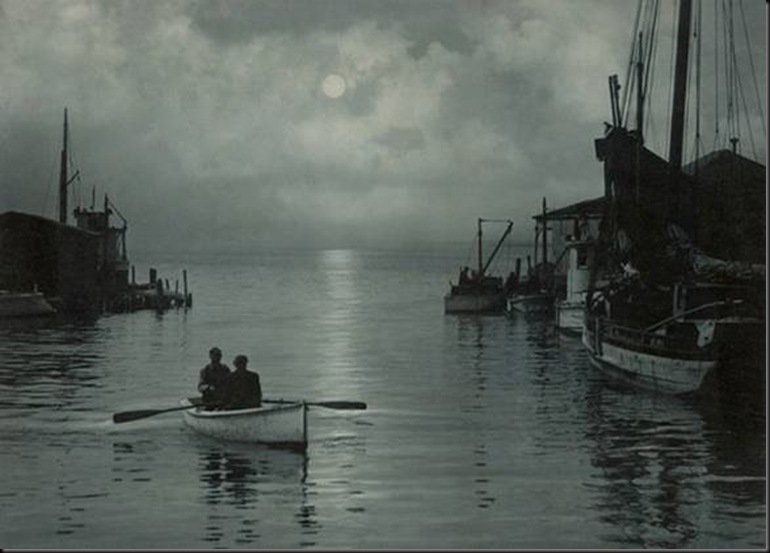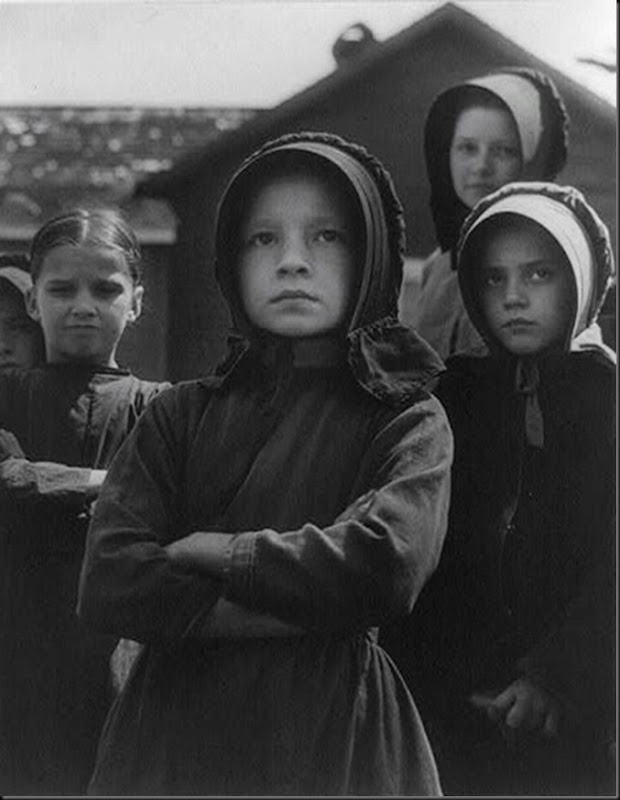 A. Aubrey Bodine doing his thing
A. Aubrey Bodine doing his thing
Despite his politics, which apparently were marginally right of Genghis Khan, and despite the fact that he often manipulated the hell out of his images to achieve the desired results, I just plain lovethe photographic work of A. Aubrey Bodine. In particular, I’m enchanted by those works where the painterly composition and feel elevate the work to another aesthetic level: which was precisely what Aubrey Bodine sought to do.
There’s another more personal reason Bodine’s work resonates with me: his preferred locale was essentially – although not exclusively – the Chesapeake Bay. I lived there, enjoyed there, photographed there, on the western shore of Maryland for about five years in the late 90s.
And boy did he nail it.
From the streets, docks and denizens of Baltimore to Midshipmen graduation ceremonies of the Naval Academy in Annapolis; from the skipjack oyster dredgers in full tilt on the storm swept bay to almost Constable-like scenes of rural Maryland; from charming studies of sweet Amish children to the sweat and toil of Baltimore dockworkers, Bodine saw, captured and enhanced.
 Tangier Sound, 1948
Tangier Sound, 1948
I didn’t live on the Bay in the black & white days of the 30s, 40s or 50s, but there’s something about Bodine’s work that evokes such a sense of place that it augments and enhances the reality, even decades later. It’s what Lawrence Durrell referred to, in a compilation of his travel writings, as the ‘spirit of place’ . Born in Baltimore in 1906, Bodine started, at the age of fourteen, as an errand boy with the Baltimore Sun newspaper. Within four years he became the commercial photographer in the Sun’s advertising department and by twenty-one he was a Sunday Sun photographer. There he gained widespread fame as an art photographer and award-winning photo-journalist. His career spanned over half a century from the 1920s to the 1960s.
 The Gentle People, 1952
The Gentle People, 1952
The alchemy of Bodine’s work came from a skilful congruence of his photo-journalistic eye with his painterly aesthetic and mastery of darkroom techniques. The aesthetic, for the most part, was due to the influences of Pictorialism. An essentially European movement, Pictorialism sought to distance photography from science and position it, if not in the art world, then adjacent to it. To do this, Pictorialists like Julia Margaret Cameron, Robert Demachy, Josef Sudek, Alfred Stieglitz and Edward Steichen, looked to – and tried to emulate – painters, etchers and engravers. Some would argue that the best of the Pictorialists’ work often paralleled that of the Impressionists.
 Toucques Valley, 1906, by Robert Demachy
Toucques Valley, 1906, by Robert Demachy
In any case, Bodine aesthetically signed up to, and began promoting and practising, the Pictorialist agenda through his own work. First locally through the Baltimore Camera Club, then via entries of images in competitions such as the Photographic Pictorialists of America’s New York Salon in 1925. With success: his impressionistic ‘Symphony in Reflections’, along with another image, was accepted.
 Symphony in Reflections, 1925
Symphony in Reflections, 1925
Ultimately his work gained national and international visibility, particularly via the magazine U.S. Camera which featured the work of both amateurs and respected professionals. As a consequence, Bodine’s work attracted the attention of editors at Harpers and Lookmagazines. For a variety of reasons Bodine never followed up on the opportunities which were beginning to open up. Personal issues, illness, work pressure and a disinclination to stray far from his beloved Baltimore anchored him on the bay, which provided him with more Pictorialist possibilities than he could wish for .
 Baltimore Harbor, 1955
Baltimore Harbor, 1955
Bearing in mind that the precepts of Pictorialism, particularly romantic Pictorialism like Bodine’s, meant getting the image as painterly as possible, Bodine often succeeded admirably. This could – and often did – mean altering elements of an image to adjust composition or even subject matter. If there was something in the image that he believed impaired the composition, out it would come. If highlights weren’t lit high enough or billowing smoke from a smokestack wasn’t accentuated enough, take care of it with a fine brush and dye. If the sky over Chesapeake Bay wasn’t dramatic enough, replace it with one from New England from his extensive files of sky negatives. Naughty Aubrey! But what absolutely delightful, stunning, pleasing and dramatic results.
 Oxen, Calvert County, Maryland, 1953
Oxen, Calvert County, Maryland, 1953
Are we talking early Photoshop here? Absolutely. But Bodine knew when enough was enough, knew just where and how to apply his amazing imagination and inventiveness. He was a master of darkroom techniques – ironically an aspect of the very science that Pictorialists wanted to distance themselves from, but used to achieve their ends. As early as 1858 there were processes which gave the Pictorialists the means to attain the art they sought. The gum-bichromate process, for instance, gave images the quality of charcoal, ochre or wash finishes. In 1878 a platinum salt process allowed photographers to achieve a lead-pencil drawing, or pencil-and-wash look. Unquestionably Aubrey Bodine knew and used these techniques and many more, although I suspect that today’s fascination with HDR would have struck even him as seriously overblown.
 Rowing at Ebb Tide, 1944 – Bodine ‘removed’ a small rowboat and two pilings
Rowing at Ebb Tide, 1944 – Bodine ‘removed’ a small rowboat and two pilings
Aubrey Bodine died in 1970. Two years later Texas Instruments patented a film-less electronic camera. In 1990 the first version of Photoshop was released. It makes me wonder what the digital camera and electronic processing would have brought to Bodine’s Pictorialist party. My guess is that he would have used whatever was at hand to achieve beautiful, pictorialist images.
All images ©A.AUBREY BODINE









Nessun commento:
Posta un commento